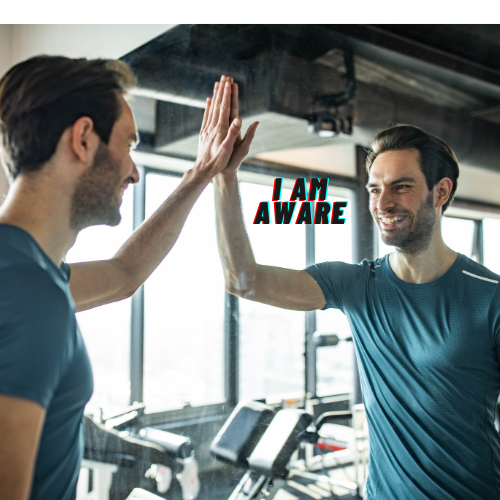The Holistic Edge: Training for Complete Wellness
Training can be done in many various ways. Training is conditioning oneself to become well-versed in their practice. Depending on the individual’s goals training is essential since it is a process to help someone reach an outcome. The concept of training is universally applicable, encompassing any endeavor in which individuals seek to enhance their skills. It can be quite difficult for some to progress in what they would like to become proficient in.
In some cases, it would matter what prerequisites must be achieved first before transitioning to the next level of progression. To add specificity, it is to exercise properly and to scale from there. One must train holistically to become aware, strong, agile, and flexible. This notion is about having total body control moreover, strengthening weak areas of the body. It is commonly believed “you are as strong as your weakest link”. Practitioners like gymnasts, Shaolin monks, or calisthenic enthusiasts tend to train holistically to some extent.
There are plenty of benefits to exercising synergistically. Do keep in mind the whole idea is to build strength and mobility. Many of the moves involved are primarily bodyweight exercises. If wanting to reach advanced variations in calisthenics being lean is mandatory. Unfortunately, becoming large to some certain degree is counterproductive since performing moves like handstands, planche, front levers, and others might be difficult. Training holistically does not mean it is only limited to calisthenics, resistance can be added to make it challenging.
The Necessity of Utilizing All Muscle Groups
It is essential to work on all muscle groups since it will strengthen all areas of the body. More so, making someone absolutely fit and having stronger mind-body awareness. “The athlete who is building muscles through weight training should be very sure to work adequately on speed and flexibility at the same time. In combat, without the prior attributes, a strong man will be like the bull with its colossal strength futilely pursuing the matador or like a low-geared truck chasing a rabbit.” (stated by Bruce Lee). When trying different training styles a person can quickly expose their weaknesses and figure out what areas they should improve. Doing this will allow the individual to consider reinforcing those fragile parts which in turn will reduce the risk of injury.
The body itself works as one so the importance of developing toughness through the physical entity will create robustness. Better yet becoming more athletic since the body works best in conjunction. Human beings are 3-dimensional and as for many the body is most likely asymmetrical (one side stronger or bigger). Now the 3 dimensions are the anterior (Front of the body), posterior (back of the body), and lateral chain (side of the body). Often times there are areas within these chains that are neglected but will have a return on investment if exercising them.
Individual goals play a pivotal role in this variation, as diverse interests naturally drive different pursuits. For those interested in resistance training, embracing a hybrid regimen could beautifully intertwine the best of both worlds. This ensures a holistic approach that leaves no valuable aspect untouched.
What Are Weak Links?
As stated previously “A chain is only as strong as its weakest link” The body is connected all around and is able to bend and rotate in different directions. Joints are similar to a fulcrum as it is a centerpiece of 2 bones (or 2 objects) that allow movements like a lever. In many cases, it is imperative to strengthen them so that a person will experience less pain. Pain in the joints can be a hindrance moreover, weak joints can cause some fatigue. To place some perspective people move around, pick up items, exercise, and stretch. The process of flexion, involving the bending of a joint that reduces the angle between the bones of a limb at the joint, plays a pivotal role.
Weak links are not only the joints but other regions that can be limited due to stiffness. This could restrict someone from doing certain movements and can feel unwanted pain which affects the ability to perform well. In modern times many are immobile (most of the time) which are contributing factors to weak links. A great example is the hips, the hips are involved in a complex architecture but this region is a key factor for overall stability and motion. But what is important is the care it receives. A common issue is sitting down for long periods, leading to tight hips. Healthy hips contribute to athletic performance like speed, agility, and plyometrics capabilities. Best of all lower back pain will be the least of worries. However, even the most basic physicality can be difficult to perform such as running, walking, walking up the stairs, jumping, squatting down, and others (That is if hips are not properly taken care of).
Another example is the rotator cuff which is involved with doing any pushing or pulling exercise. The rotator cuff helps maintain shoulder stability and health. A benefit of this helps someone progress in doing more weight and other advanced calisthenics exercises. Because of the support, it provides the shoulder to be stable and it mitigates the risk of injury. When doing exercises for the rotator cuff, lightweight is only needed. The rotator cuff only needs to be strengthened, not built. If using heavy weight and feeling discomfort it could do some damage to that area. That is not necessary.
Key Component To Strength: Mobility
Muscle mobility is the ability of muscles to move freely and effectively throughout their full range of motion. It involves both the flexibility of muscles and the capacity for muscles to contract and lengthen without limitations.
Benefits:
- Improve muscle function.
- Decrease muscle imbalance.
- Enhance overall physical capabilities.
- Promoting the health of muscles, tendons, and surrounding tissues.
To enhance muscle mobility, include dynamic stretches and controlled movements. However, remember that muscle mobility isn’t just about extreme flexibility; it’s about fostering healthy muscle function, tendons, and surrounding tissues for optimal movement.
When it comes to flexibility it also has its importance. The muscles and tendons stretch and lengthen, allowing joints to move through a greater range of motion. It primarily focuses on the extensibility of muscles and their ability to elongate.
Good flexibility can lead to:
- Improved joint range of motion.
- Reduced muscle stiffness.
- Decreased risk of muscle strains and tears.
Generally, this is not only helpful for training, but for longevity. Keep in mind if areas are tight it is a limiting growth factor. Extensive mobility work is key to unlocking true strength since the body will easily move from the simplest to complex movements.
Ideal Movements
When wanting to get to advanced levels people need to start small. Gradually building up will help the practitioner get adjusted with each exercise. So, there will be less risk of injury which in turn has no setbacks. Some moves that are great to start with are:
- Dead Hangs: This is great for your shoulders and extensor muscles (Forearms). Hang from a horizontal bar.
- Back Bridging: Incredible all-around stretch: The entire posterior chain and partially the anterior chain get stretched.
- Cossack lunges: Hip and Hamstring mobility.
- Fingertip planks: Fingers and forearms work.
- L-Sits: Core stability and Lower body.
- Wrist push-up: Build resilient wrists.
- Horse stance: Lower body conditioning. Try to stay in this position as long as possible. Up to 5 minutes shows amazing endurance!
- Foot rotation: Unlock tight ankles.
- Calf Raises: Calves gain size and ankle work.
- Single Leg Balance: Test unilateral stability.
- Face Pulls: Constructing the shoulder power from the inside out.
- Shoulder Rotation: Working the shoulder scapula (rotator cuff is part of this).
With these exercises, a person is sure to strengthen weak areas that do not get much attention. Immersing oneself in exercises tailored to these overlooked aspects, a solid groundwork is laid for a holistic journey of training. More importantly, not many would want stiff or fragile areas of the body otherwise it is a limiting element to safely perform incredible feats.
If interested in stretching the back check out: 5 Stretches to Make the Back Stronger!
Conclusion
Overall, training is a concept of sharpening skills in which a person would like to become stronger. When it comes to producing all-around physical strength there are weak links that need attention. This is the reason holistic training has significance since it helps develop a body ready for challenges. From working on all muscle groups, joints, and mobility a person is certainly able to reach higher levels of strength sooner. Also, the ability to recover quickly and prevent injury since one is keeping the body mobile and lubricated. There are a vast amount of exercises that can be done whether it’d be a rest day or a workout day. Incorporating these moves daily or every other day will provide greater support.
If you found this post helpful please consider sharing and subscribing!






